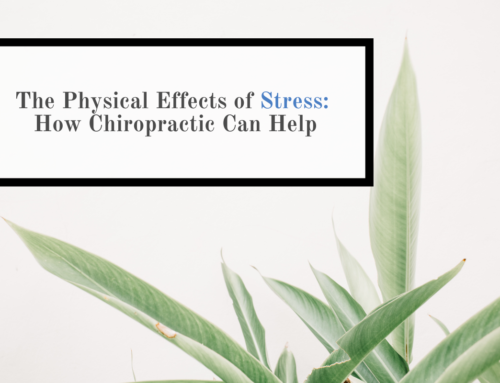Asthma is one of the fastest growing chronic conditions in the United States with over 15 million Americans affected, including 4 million children. The death rate from asthma has increased more than 66% since 1980, with a record 6,600 annual deaths attributed to asthma. (1)
Americans spend $6.2 billion annually on asthma treatment and over $1 billion on medications. Adults with asthma lose over $850 million in lost wages from work and parents with asthmatic children lose over $1 billion by staying home from work to care for their children. Asthma is the #1 cause of hospitalization for children in the United States. (2) An estimated 300 million people worldwide suffer from asthma, with 250,000 annual deaths attributed to the disease.
A study by Dutch and American researchers found that 75% of children with moderate to severe asthma still have the condition by the time they reach their mid-twenties. (3)
After a decade of decline, both the number of cases and deaths due to asthma are surging. Cases nearly doubled from 1994 to 2009 with the biggest increase among people ages 18-44, according to the American Lung Association. In 2009, over 6,000 people succumbed to fatal attacks, twice the number who died in 1979. The death rate has risen fastest for African-American. (4)
U. S. NEWS & WORLD REPORT
ANATOMY OF AN ASTHMA ATTACK
An asthma attack is caused by an inflammatory response which causes constriction of the bronchial tubes. An asthma attack can be triggered by different types of irritants including dust, pollen, ragweed, aspirin, cockroaches, perfume, stress, dust mites, pet hair, food additives, and occupational vapors. Although these things may trigger an attack, they are not the primary cause of the attack. Research has shown that there are several factors that contribute to asthma, including the recent increased use of antibiotics and vaccines.
“With the rise of vaccine and antibiotics, people in developed countries have experienced fewer serious childhood infections than ever before and scientists suspect that an immune system with no serious work to do is likely to become a renegade army, attacking whatever irritant it encounters.”6
NEWSWEEK
“Several studies have shown that the incidence of asthma and allergies tends to rise in countries where childhood immunization rates are high. This has prompted some researchers to suggest that certain infections may trigger immune changes that protect children from developing asthma and allergies later. Preliminary studies have shown a protective effect of measles and infections with intestinal parasites.” 5
SCIENCE NEWS CONVENTIONAL TREATMENT
Conventional treatment includes the use of bronchodilators, steroids and allergy desensitization shots to ease the symptoms of asthma and although no one would disagree with the appropriate use of medicine in controlling asthma, there is mounting research to suggest that serious problems often result with their usage.
“A focus on bronchodilators as the only therapy is inappropriate. It is symptomatic therapy that has nothing to do with the healing process.” 7
Dr. Michael Kaliner, Head of Allergic Disease Section, National Institute of Mental Health
“People with asthma breathed a sigh of relief with the advent of inhaled steroids in the early 1990s. Thousands of people take high dosages daily in regimes that may last a lifetime. New research indicates that inhaled steroids may have an unsuspecting dark side. A study of nearly 50,000 elderly people in Canada found that prolonged use of inhaled steroids markedly increases a person’s risk of glaucoma, a leading cause of blindness.” 8
SCIENCE NEWS
“Our approach to asthma has been woefully inadequate and misguided, our medications have worsened the condition over the long term, and few of our doctors have developed the kind of comprehensive programs that emphasize healing and prevention.” 9
Dr. Firshein, Reversing Asthma
The focus of medical science is beginning to shift away from attempts to contain the symptoms of asthma to exploring the controlling mechanism as a means of solving and preventing asthma and related respiratory conditions.
THE NERVOUS SYSTEM
A properly functioning nervous system should be the first priority in solving asthma since it is the nervous system which controls all of our bodily functions. The nervous system works by sending and receiving messages or impulses to all parts of the body . Breathing is controlled by centers in the brain, the main one being the respiratory center which is found in the medulla oblongata. From here, the nerve impulses are sent to the respiratory muscles, causing them to expand or contract. Nerve impulses also control the tone of the bronchial tubes. The sympathetic system opens or dilates the bronchial tubes, and the parasympathetic system closes or constricts them.
“The nervous system plays an important role in both the control and activity of the immune system. The sheer power of the brain to affect the body as a whole and the general state of health is amazing.” 11
The nervous system is protected by the spine, consisting of 24 moveable vertebrae. When the spine is in its proper position, it protects the nerve pathways. But when vertebrae become misaligned, interference to the nerve impulses occurs ,which reduces the overall functioning of the nervous system and of the particular organ to which it is assigned. These spinal misalignments are known as “vertebral subluxations.”
“Physiopathic changes in spinal structures actually produce an inhibition of nerve impulses. Subjective and clinical findings associated with this syndrome include severe asthma attacks &bronchial asthma.” 12
Neville T. Usher, MD
“Research has shown that an imbalance may exist in the nervous system that supplies the bronchial tubes of an asthmatic individual. “ 13
Francis Adams, MD
“Asthma is often related to the position of the first and second thoracic vertebra, although misalignment of the spine in other areas can be a contributing factor. Faulty alignment around the seventh cervical vertebra (at the base of the neck) can also be a reason for asthma and other breathing difficulties.” 14
Asthma: An Alternative Approach
Spine Abnormalities of central afferent and efferent pathways have been revealed by evoked potential studies in diabetic patients. Central nervous system abnormalities are more frequent in patients with peripheral neuropathy, but evoked potential can be abnormal even in patients without neuropathy. 20 Clinical Neuroscience
CHIROPRACTIC
The science of Chiropractic is founded on the premise that a proper nerve supply is essential in controlling and regulating bodily function. Doctors of Chiropractic detect and correct vertebral subluxations by physically adjusting the spine. This restores the nervous system to an optimum level of function, which maximizes the body’s inherent healing ability Chiropractors have never claimed that they can “cure” asthma and other related conditions and not all cases of asthma are caused by spinal stress — but scientific research has demonstrated that correcting subluxations does restore and improve respiratory and immune function, which improves conditions like asthma. A study that was published in a Holland Medical Journal reported that out of a group of 115 families with asthmatic children, 73% had utilized Chiropractic care for the asthma and 92% of the families reported that Chiropractic was beneficial for their children. 22
The Brisbane Asthma Study reported that Chiropractic was the most frequently consulted form of alternative health care and that 29.6% of families with asthmatic children used Chiropractic for asthma treatment. When compared with other forms of alternative health care, Chiropractic received the highest satisfaction rate — 86.5%. 23 THE MEDICAL JOURNAL OF AUSTRALIA 76.5% of patients with bronchial asthma said they benefited from chiropractic treatment. Peak flow rate and vital capacity increased after the third treatment. 24 EUROPEAN CHIROPRACTIC UNION
“One possible alternative to drug therapy for asthma is Chiropractic care. There is mounting preliminary clinical evidence that it may offer relief to asthma sufferers. It may also be possible to rectify, at least to some extent, the hyper-responsiveness of the lungs through Chiropractic.” 21
TRUE HEALTH JOURNAL
The correction of vertebral subluxations with Chiropractic adjustments can improve conditions such as asthma because of the restored nerve supply to the pathways of both the respiratory and immune systems. Improvement of immune function is an often overlooked, but well documented benefit of Chiropractic care. A study, published in the Chiropractic Research Journal, compared the health and wellness of 200 children under Chiropractic care to 200 children under conventional medical care. The Chiropractic group had fewer ear infections, fewer allergies, fewer cases of tonsillitis and asthma. The health of the children under Chiropractic care was demonstrably superior to the children who had not received it.25
“The quality of healing is directly proportional to the functional capability of the central nervous system to send and receive nerve messages.” 26
Janson Edwards, MD, PhD
Recent research by Patricia Brennan, PhD., suggests that spinal adjustments may have a direct effect on certain aspects of immune function. Her group showed that when the thoracic spine (middle of back) was adjusted, the respiratory burst cycle of white blood cells was enhanced.27 “By releasing stress on the nervous system, Chiropractic permits the immune system to function more effectively.” 28 DR. IRWIN KORR Studies that have measured the effect of Chiropractic treatment on the immune system have showed that Chiropractic may influence T and B lymphocytes, NK (Natural Killer) cell numbers, antibody levels, phagocytic activity, and plasma bet-endorphin levels 29 A recent study by Dr. Ron Pero, a leading cancer and genetic research specialist, found that chiropractic patients of all ages had a 200% greater “immune competence” than people who had never received Chiropractic care and a 400% greater immune competence than people with serious diseases. 30
REFERENCES






